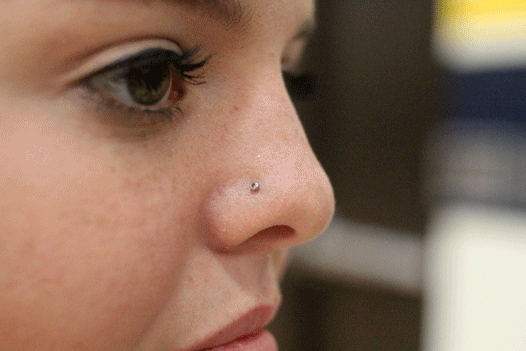Dress Code Confusion
Stricter punishments for violations causes student complaints

October 8, 2015
Stricter enforcement of this year’s dress code has generated mixed remarks from students. Parents and students desiring change can address their concerns at the 7 P.M. school board meeting, Oct. 27 at central office.
“At past school board meetings, I’ve noticed there’s very little parental involvement,” principal Gordon Butler said. “It’s great to complain, but you’re complaining after the fact. If students want change for next year, they need to start this year.”
Comparison to other campuses spurred the new enforcement of dress code.
“When I left McKinney High School and went to work in central office, I had a chance to go to Boyd and North events,” Butler said. “I noticed that most of their students are in dress code. It kind of bothered me that if it’s McKinney ISD, why don’t we all have the same dress code.”
AP English teacher Kelly Armbruster suggests another reason.
“Because of our change in leadership, a new expectation has been set for us,” Armbruster said. “In order for it to mean something, we have to consistently enforce it. We can’t stop after the first few weeks of school or only do it at the start of every semester.”
The dress code serves as a life readiness skill.
“Dress code sets the standard for later on in life,” Armbruster said. “Whether kids go to the work force, or the military, they are going to have to adhere to some form of dress code.”
Humanities teacher Carol Winters agrees with this.
“A dress code holds all of us, both students and staff, for presenting ourselves in a professional manner,” Winters said. “Each school year is a new opportunity to shape the image we want of our school. This emphasis on dress code reflects our response to that opportunity.”
When current junior Melba Muñoz moved to McKinney, the severity of the dress code surprised her.
“At my school in New York, everywhere in the hallway, there were students with wildly colored hair and nose/eyebrow piercings,” Muñoz said. “When I moved here, I was shocked that dress code called ‘colored hair’ a distraction. I think some of the rules correlate with the conservative nature of parents.”
Butler interprets the situation similar to Muñoz.
“The dress code depends on the norms of the community where the school is located,” Butler said. “In more urban districts, things like nose rings aren’t a big deal. The board is very responsive to the desire of the community. I think gradually we will make that shift, but input needs to be provided by parents and students.”
Sonja Harrison, director of administrative services of McKinney ISD confirms this.
“The dress code is adjusted each year to changes in society,” Harrison said. “Guidelines are reviewed each year and revised based on input. The district strives to create an environment that is safe, secure and doesn’t interfere with the educational process for any of our students.”
On an average day, 85% of students are in dress code.
“A majority of the 15% who are not in dress code can get it fixed,” Butler said. “90% of students are very compliant, but then you have that 10% that always wants to push it. We address those kids on a case-by-case basis.”
Punishments correspond with how many times students have been dress coded.
“The first time you are out for dress code, if you do not fix it, you sit in ISS for 30 minutes that day,” Butler said. “ The second time, you sit in ISS for one day. By the third time, a parent conference is involved. And by the fourth time, you are sent home for a couple days. We don’t want to do this, but people that go out of their way to violate dress code make it unfair for those who comply.”
Another concern students have about dress code involves its gender-biased enforcement.
“Honestly, I don’t look specifically for girls in the hallways,” Winters said. “I dress code whatever catches my eyes. It is mostly girls, because they’re the ones that wear jeans ripped to their waists and dresses that are too tight or too short.”
Butler proposes a reason for this situation.
“If I am being honest, when you look at dress code, most rules pertain to girls because girls have more clothing options,” Butler said. “Having a daughter myself, I don’t want to stigmatize young ladies by making dress code directed at them. But young men wear pants or shirts; we don’t wear skirts, we don’t wear dresses, we don’t wear spaghetti straps.”
Even though Butler acknowledges some flaws in dress code, he supports its existence.
“I believe that if you do the little things well, the big things take care of themselves,” Butler said. “If we don’t enforce the little rules, like dress code, how can I expect students to comply with big tasks like learning chemistry. We are going to abide by dress code, use a little common sense and reason, and we are going to adhere to it.”
